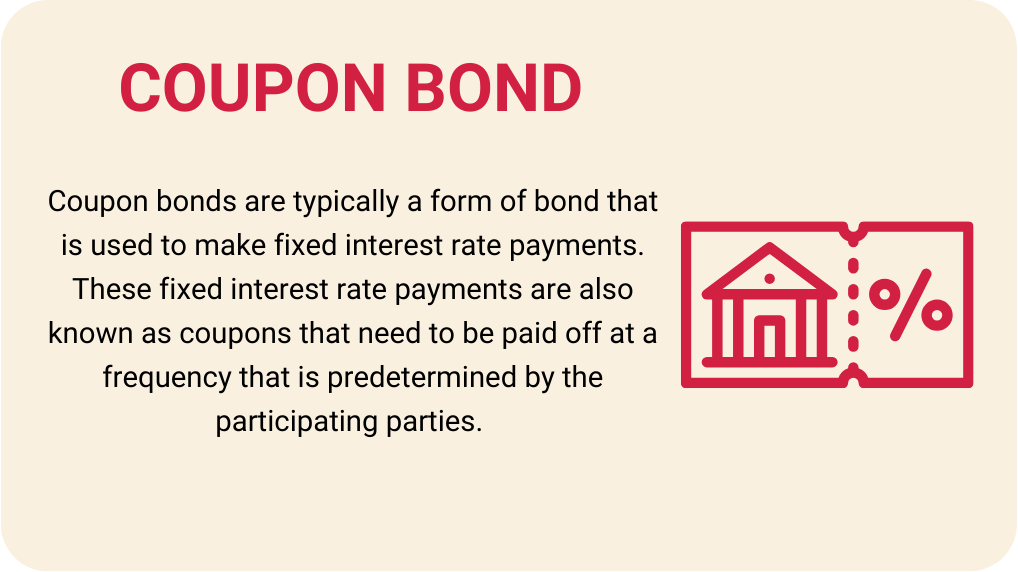Content
- What is Coupon Bond?
- Understanding Coupons
- How Does A Coupon Bond Work?
- Coupon Bond Pricing
- Who Should Invest In This Type Of Bonds?
- Conclusion
A coupon bond, also known as a bearer bond or bond coupon, is a debt contract that includes coupons that represent half-yearly interest payments. The issuer keeps no records of the purchasers of coupon bonds, and the purchaser's name is not inscribed on any form of certificate. Bond holders receive these coupons between the time the bond is issued and the time it matures.
Here are more details on the concept of coupon bond.

More Articles to Explore
- Difference between NSDL and CDSL
- Lowest brokerage charges in India for online trading
- How to find your demat account number using PAN card
- What are bonus shares and how do they work?
- How to transfer shares from one demat account to another?
- What is BO ID?
- Open demat account without a PAN card - a complete guide
- What are DP charges?
- What is DP ID in a demat account
- How to transfer money from demat account to bank account
Disclaimer: Investment in securities market are subject to market risks, read all the related documents carefully before investing. For detailed disclaimer please Click here.
Frequently Asked Questions
Divide the total of yearly coupon payments by the par value of the bond. You can make more precise calculations once you gather more information on this and on bond coupon vs yield.
The bond coupon rate helps to offer a security margin against the elevating interest rates in the financial market.
Generally, it is made two times a year.
Although the coupon bond rate is fixed, the par value or face value is susceptible to change. This can be affected due to many reasons, including the financial health of the government or the company in general.
It is also referred to as an Accrual bond which is a form of debt security where the interest is not paid. However, the trading occurs at greatly discounted prices which helps receive substantial profit at the time of maturity. There are many bonds that are issued at this type of bond, while others turn into zero-coupon bonds over time.
Here’s how the price of a zero-coupon bond is estimated-
Price = M ÷ (1 + r)n
Here:
● M stands for bond’s face value or maturity value
● R is the rate of interest that is needed
● N stands for the number of years remaining before the maturity date arrives.



